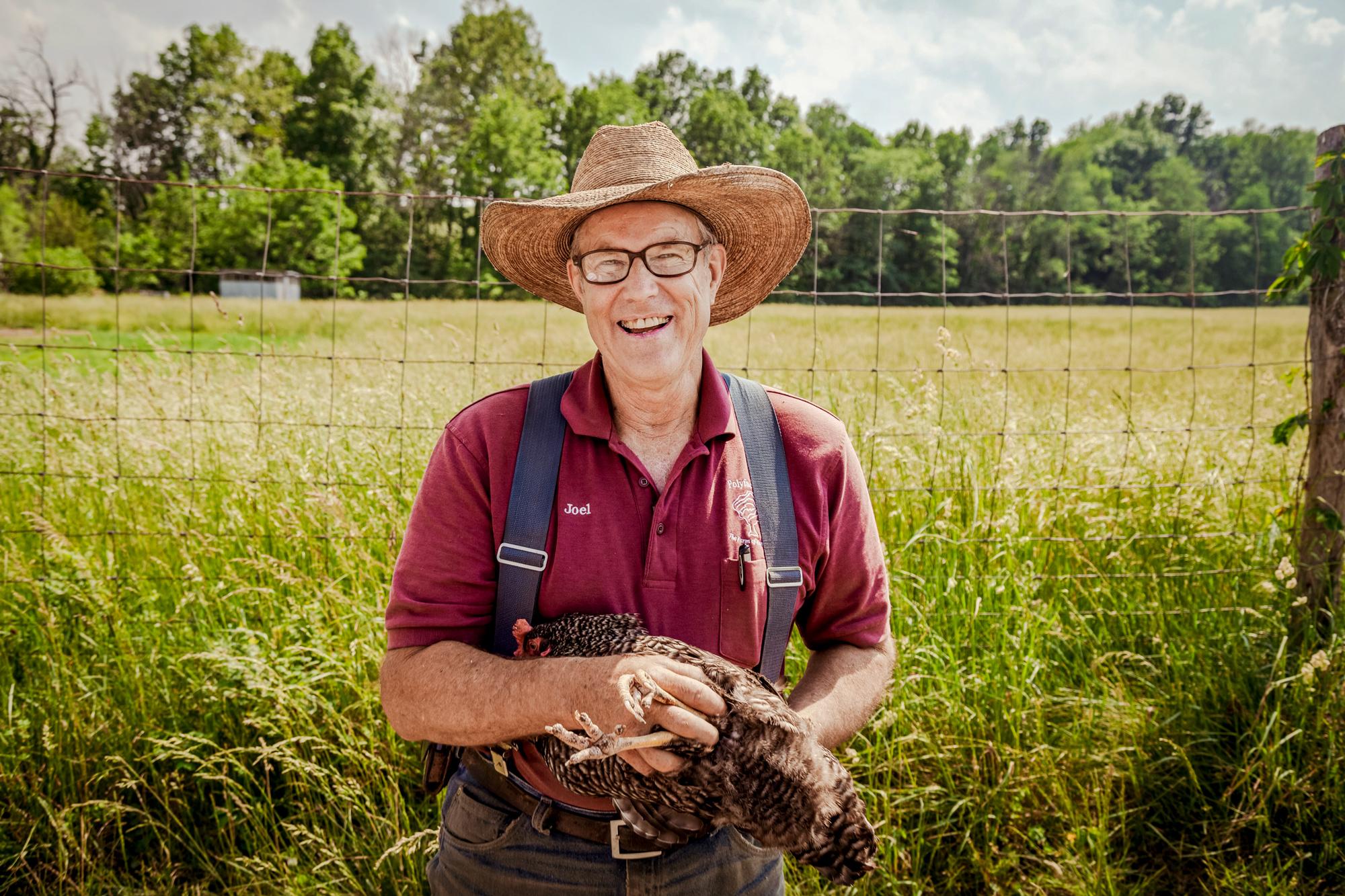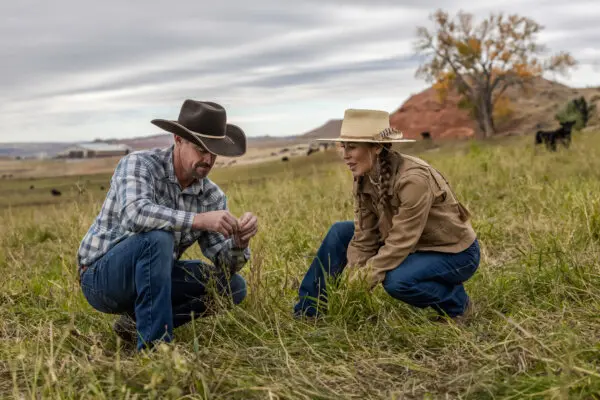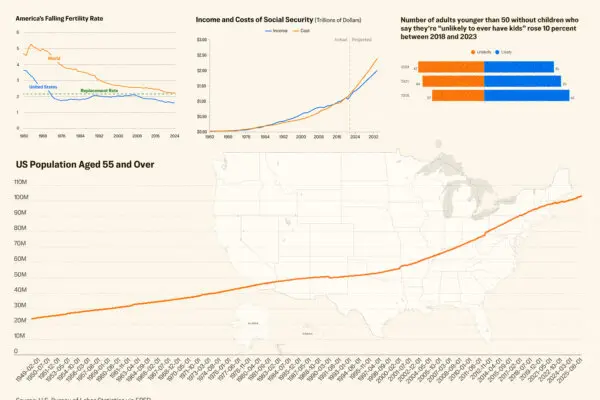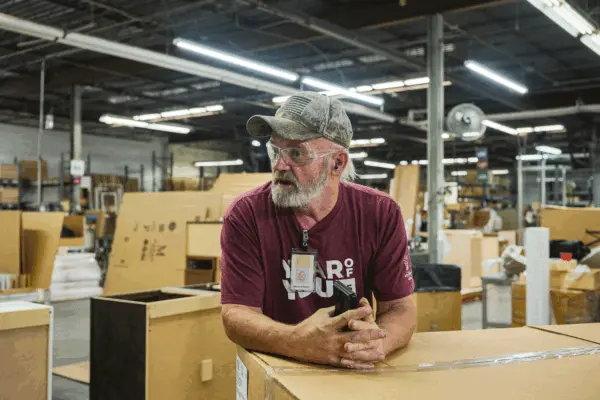SWOOPE, Va.—Joel Salatin, the self-described “Christian Libertarian environmentalist capitalist lunatic farmer,” enthusiastically engages in a free-flowing conversation as he navigates the bumpy mountain roads that wind through his 700-acre Polyface Farms in Virginia’s Shenandoah Valley.
He showcases his whimsical sense of humor while driving a faded early-1980s Ford Bronco that has no windows and only gets washed by the rain.











